DEI Celebration Resources
In the United States, there are a number of celebrations held each month to acknowledge various historic events and figures from ethnic and marginalized groups. These celebrations serve as an opportunity to educate others on the contributions of various individuals and communities to U.S. History. At Cornell, we've created this page to recognize some of the heritage months with resources and information on how to celebrate each. This list is not exhaustive nor inclusive of every possible celebration.


History
Dr. Martin Luther King, Jr. Day is a federal holiday that takes place on the third Monday of each January. This day was established in honor of Baptist minister and social justice activist Dr. Marin Luther King Jr. who was assassinated in 1968. King was the first modern private citizen to be honored with a federal holiday and his legacy continues to inspire millions of people around the world.
Resources
- Teaching Tolerance, The Best of Our Dr. Martin Luther King Jr. Resources
- AmeriCorps, MLK Day of Service Events and Activities
- Time, A Brief History of Martin Luther King Jr. Day
- Boston University, Dr. Martin Luther King Jr. Day Weekend Reading List for Older Children, Younger Children, and Adults
Zoom Background*
Right click on the image above to save and add it as a background for your Zoom meetings! Need help? Click here to learn how to add this image as your Zoom background.
* If your image appears backwards, be sure to uncheck "Mirror my video" at the bottom of your Backgrounds & Filters window within Settings.
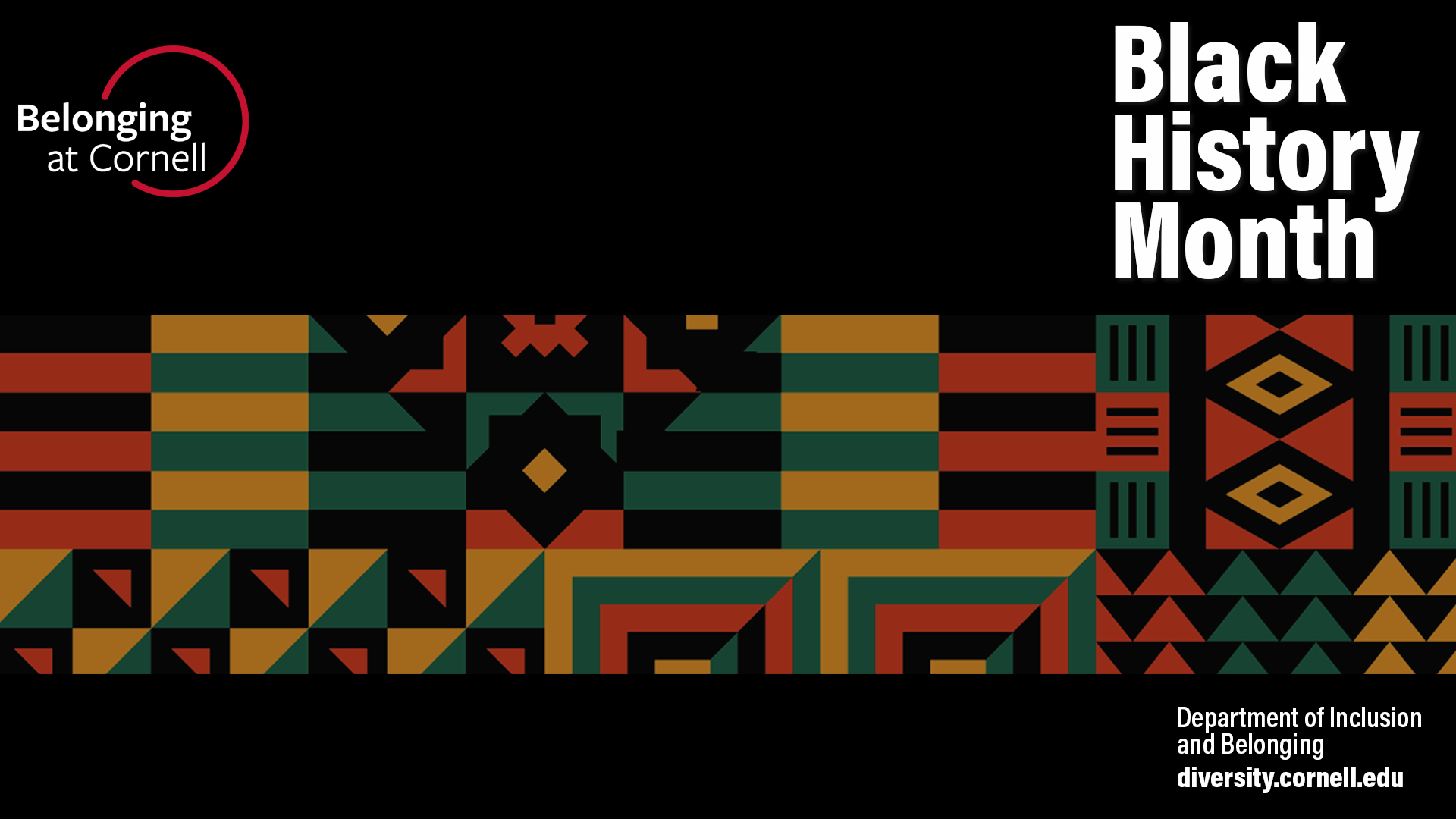
History
Black History Month is an annual celebration of achievements by African Americans and a time for recognizing their central role in U.S. history. Also known as African American History Month, the event grew out of “Negro History Week,” the brainchild of noted historian Carter G. Woodson and other prominent African Americans. Since 1976, every U.S. president has officially designated the month of February as Black History Month. Other countries around the world, including Canada and the United Kingdom, also devote a month to celebrating Black history.
Since 1976, every American president has designated February as Black History Month and endorsed a specific theme.
The Black History Month 2022 theme, Black Health and Wellness, "acknowledges the legacy of not only Black scholars and medical practitioners in Western medicine, but also other ways of knowing (e.g., birthworkers, doulas, midwives, naturopaths, herbalists, etc.) throughout the African Diaspora. The 2022 theme considers activities, rituals and initiatives that Black communities have done to be well." (from the Association for the Study of African American Life and History).
[Source: History.com]
Cornell Resources
- Black History Month Archives from Cornell University Press
- Inclusive Excellence Podcast, Blackness at Cornell special series
- Recorded Seminar- Cornell and Black History: Highlights from Cornell University Library's Rare and Distinctive Collections
- Black History Month from The History Center in Tompkins County
Additional Resources
- African American History Month Resources from the Library of Congress
- Blackpast.org, a reference center dedicated to providing information to the general public on African American history and the history of more than one billion people of African ancestry around the world
- Gallup Center on Black Voices, Gallup's independent research that reveals the trends and insights on the experiences of Black Americans.
- NPR, Celebrate Black History Month at Tiny Desk
- Teaching Tolerance, Black History Month- Go beyond trauma and struggle to examine the liberation, civic engagement, creativity and intersecting identities of Black people during Black History Month
- The New York Times, Honor and Learn This Black History Month
Zoom Background*
Right click on the image above or below to save and add it as a background for your Zoom meetings! Need help? Click here to learn how to add this image as your Zoom background.
The image below includes the following individuals starting from left to right, top row: Toni Morrison, President Barack Obama, Madam C.J. Walker, Malcom X, Harriet Tubman, James Baldwin, Ida B. Wells, Muhammad Ali, and Nina Simone.
Left to right, bottom row: Representative John Lewis, Beyoncé, Spike Lee, Oprah Winfrey, Frederick Douglass, Shirley Chisholm, Dr. Martin Luther King Jr, Maya Angelou, and Nelson Mandela.
* If your image appears backwards, be sure to uncheck "Mirror my video" at the bottom of your Backgrounds & Filters window within Settings.


History
Women’s History Month had its origins as a national celebration in 1981 when Congress passed Pub. L. 97-28 which authorized and requested the President to proclaim the week beginning March 7, 1982 as “Women’s History Week.” Throughout the next five years, Congress continued to pass joint resolutions designating a week in March as “Women’s History Week.” In 1987 after being petitioned by the National Women’s History Project, Congress passed Pub. L. 100-9 which designated the month of March 1987 as “Women’s History Month.” Between 1988 and 1994, Congress passed additional resolutions requesting and authorizing the President to proclaim March of each year as Women’s History Month. Since 1995, presidents have issued a series of annual proclamations designating the month of March as “Women’s History Month.” These proclamations celebrate the contributions women have made to the United States and recognize the specific achievements women have made over the course of American history in a variety of fields.
[Source: Women's History Month.gov]
Cornell Resources
- Women's History Month: Images from an immigrant woman's life in the early 1900s from Cornell University Press
- Celebrating Women's History Month with the College of Veterinary Medicine
- Learn more about the Gender Equity Resource Center on the Ithaca campus
Additional Resources
- The History Center in Tompkins County has a number of resources for Women's History Month
- Learn more about the Women's Rights National Park in Seneca Falls, New York
- A Proclamation on Women's History Month from The White House
- What to Watch: Women's History Month by PBS
- Black Women in History by PBS
- 6 Women with Disabilities Who Made History by sheknows
- 5 Powerful and Influential Native American Women by Biography
- 5 Native Women Leaders Who Made History by Teen Vogue
- 10 Inspiring Latinas Who've Made History by Google Arts and Culture
- 5 Influential African Women in History by Demand Africa
- Celebrating AAPI Heritage Month: 5 AAPI Women Who Have Made History by Women's Way
- 4 Asian American Women Who Changed History by Teen Vogue
Zoom Background*
Right click on the image above to save and add it as a background for your Zoom meetings! Need help? Click here to learn how to add this image as your Zoom background.
* If your image appears backwards, be sure to uncheck "Mirror my video" at the bottom of your Backgrounds & Filters window within Settings.

History
César Chávez was born on March 31st 1927, in Yuma, Arizona. His family had moved to Northern California to work as migrant farm workers after losing their land in the great depression.
He served in the US navy for two years at the end of the Second World War, returning to work on farms until 1952, when he became involved with the Community Service Organization, a Latino civil rights group, rising to become its national director by 1958.
In 1962, Chávez became a cofounder of the National Farm Workers' Association (now the United Farm Workers). In this new role, he became the best known Latino American civil rights activist. Leading the struggle for better rights for farm workers, his aggressive but nonviolent tactics made the farm workers' struggle a moral cause with wide support. His also gained national awareness as he went on several hunger strikes to highlight his campaigns.
Chávez died on April 23rd 1993 of unspecified natural causes, with some believing that his death may have been caused in part by his hunger strikes.
César Chávez Day is always celebrated on his birthday, March 31st. President Barack Obama declared César Chávez Day a national holiday in 2014.
It is not a federal holiday, but is a state holiday in California. It is either an optional or commemorative day in nine other states - Arizona, Colorado, Illinois, Michigan, New Mexico, Texas, Utah, Wisconsin and Rhode Island.
California, Arizona, Colorado, Michigan, New Mexico, Texas, Utah and Wisconsin observe César Chávez Day by closing schools and state offices.
[Source: Office Holidays.com]
Cornell Resources
- The Cornell Farmworker Program seeks recognition for farmworkers' contributions to society and their acceptance and full participation in local communities. Aquí se puede encontrar el sitio web y recursos en Español.
-
Cornell support for NY farmworkers wins national recognition by Cornell Chronicle
Resources
- Cesar Chavez: American Civil Rights Activist- Fast Facts by History
- Cesar Chavez- American Civil Rights Activist- Mini Bio by Biography
- Witness History, Cesar Chavez- Yes we can! by BBC Sounds
- Cesar Chavez: The Life Behind A Legacy Of Farm Labor Rights by NPR
- Finding Cesar Chavez--a transformational moment | Jose Calderon | TEDxClaremontColleges
Zoom Background*
Right click on the image above to save and add it as a background for your Zoom meetings! Need help? Click here to learn how to add this image as your Zoom background.
* If your image appears backwards, be sure to uncheck "Mirror my video" at the bottom of your Backgrounds & Filters window within Settings.
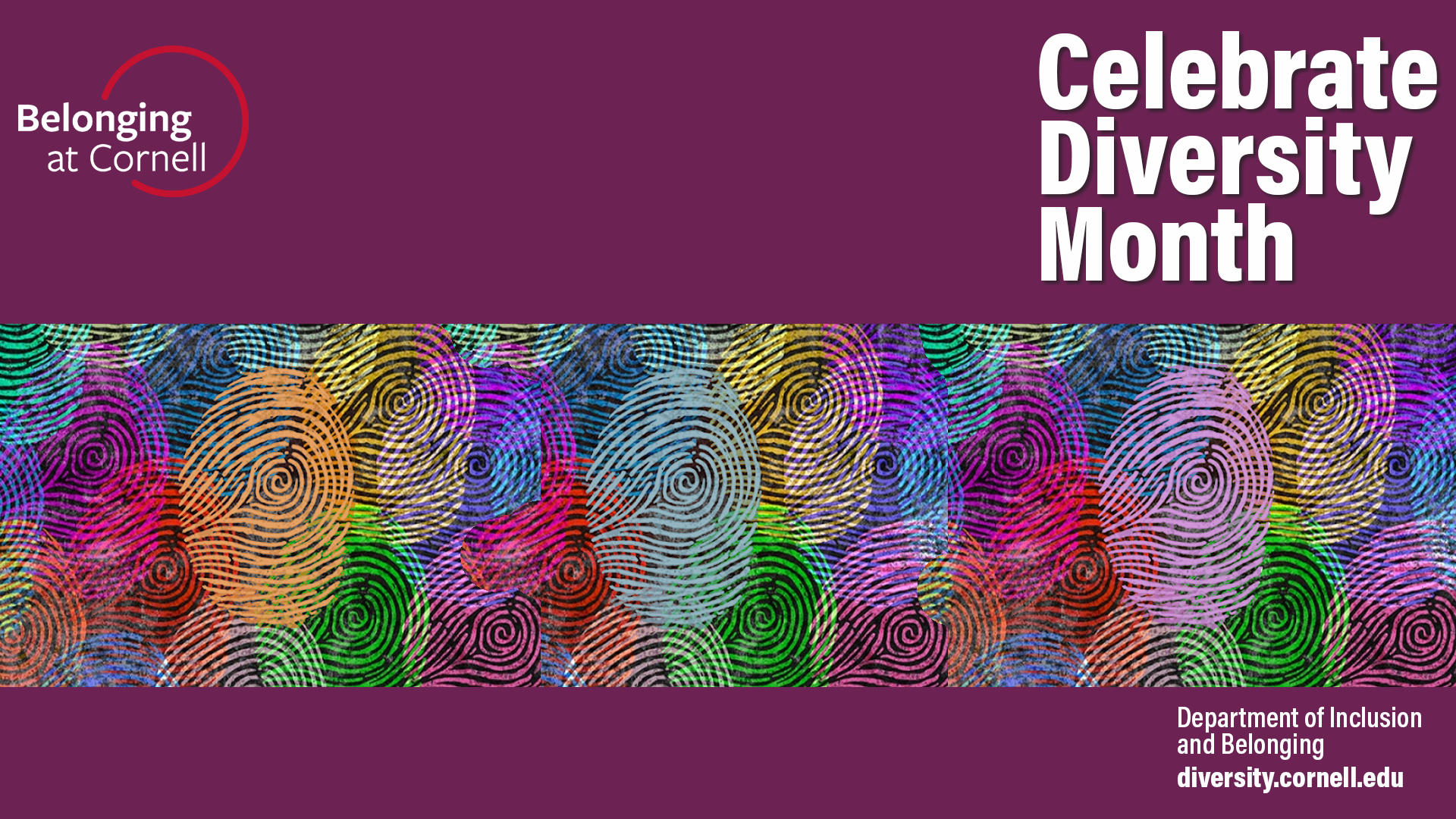
History
April is Celebrate Diversity Month, started in 2004 to recognize and honor the diversity surrounding us all. By celebrating differences and similarities during this month, organizers hope that people will get a deeper understanding of each other.
[Source: Diversity Best Practices]
Resources
- How to Celebrate Diversity Month At Home During COVID-19 by CSRWire
- April is Diversity Month, Six Ways to Celebrate by LinkedIn Pulse
- 5 Ways to Celebrate Diverse Cultures in the Office by The Other Side of Sales
- The Inclusive Excellence Podcast by the Department of Inclusion and Workforce Diversity, in collaboration with the Cornell Broadcast Studio
Upcoming Events
- April 26- May 1: 3rd Annual Celebrate Diversity Week hosted by Weill Cornell Medicine
- April 27 and April 28: The Inclusive Excellence Summit. Open to all Cornell staff and faculty.
Zoom Background*
Right click on the image above to save and add it as a background for your Zoom meetings! Need help? Click here to learn how to add this image as your Zoom background.
* If your image appears backwards, be sure to uncheck "Mirror my video" at the bottom of your Backgrounds & Filters window within Settings.
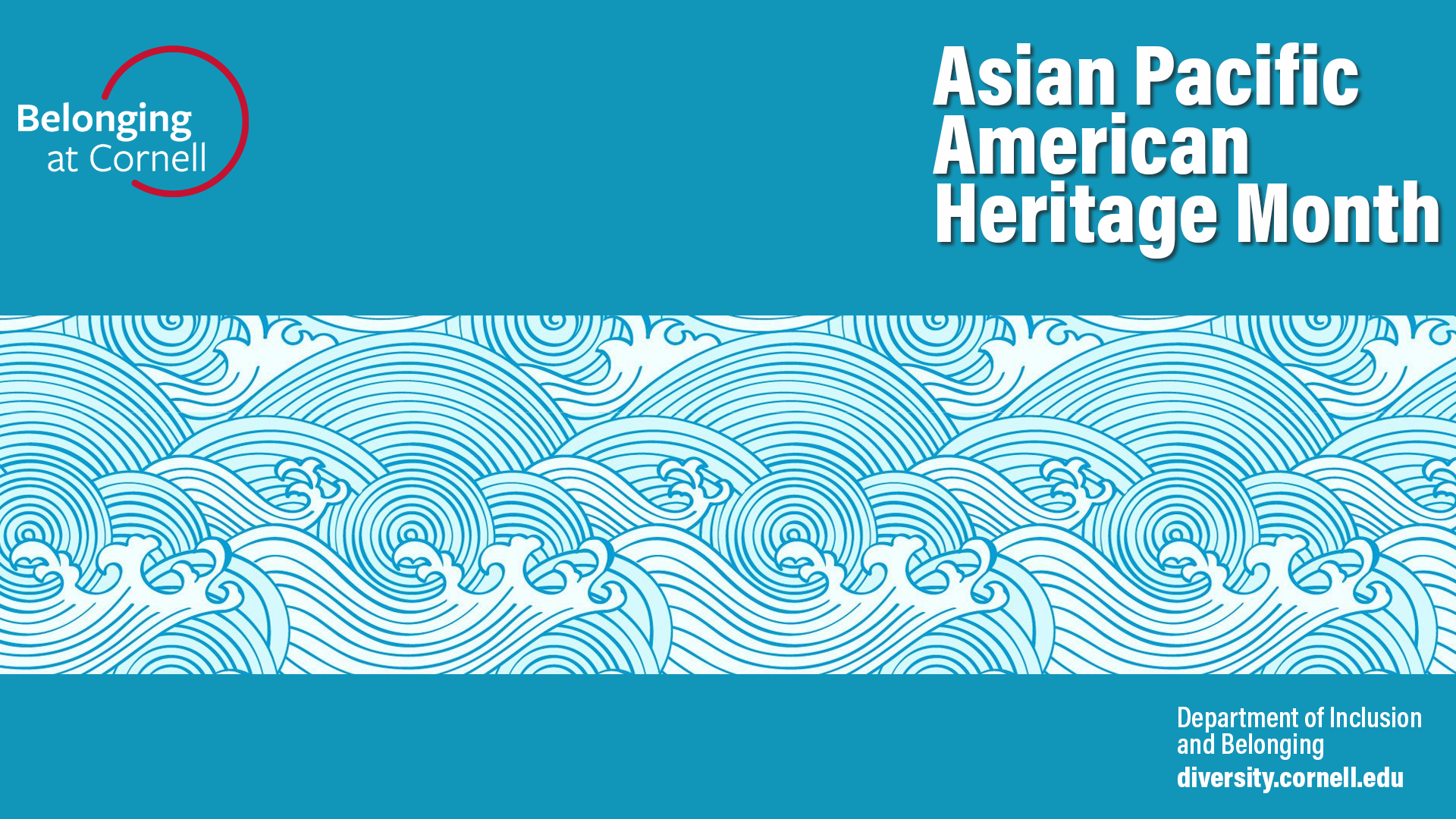
History
May is Asian/Pacific American Heritage Month – a celebration of Asians and Pacific Islanders in the United States. A rather broad term, Asian/Pacific encompasses all of the Asian continent and the Pacific islands of Melanesia (New Guinea, New Caledonia, Vanuatu, Fiji and the Solomon Islands), Micronesia (Marianas, Guam, Wake Island, Palau, Marshall Islands, Kiribati, Nauru and the Federated States of Micronesia) and Polynesia (New Zealand, Hawaiian Islands, Rotuma, Midway Islands, Samoa, American Samoa, Tonga, Tuvalu, Cook Islands, French Polynesia and Easter Island).
Like most commemorative months, Asian/Pacific American Heritage Month originated with Congress. In 1977 Reps. Frank Horton of New York introduced House Joint Resolution 540 to proclaim the first ten days in May as Pacific/Asian American Heritage Week. In the same year, Senator Daniel Inouye introduced a similar resolution, Senate Joint Resolution 72. Neither of these resolutions passed, so in June 1978, Rep. Horton introduced House Joint Resolution 1007. This resolution proposed that the President should “proclaim a week, which is to include the seventh and tenth of the month, during the first ten days in May of 1979 as ‘Asian/Pacific American Heritage Week.’” This joint resolution was passed by the House and then the Senate and was signed by President Jimmy Carter on October 5, 1978 to become Public Law 95-419 (PDF, 158kb). This law amended the original language of the bill and directed the President to issue a proclamation for the “7 day period beginning on May 4, 1979 as ‘Asian/Pacific American Heritage Week.’” During the next decade, presidents passed annual proclamations for Asian/Pacific American Heritage Week until 1990 when Congress passed Public Law 101-283 (PDF, 166kb) which expanded the observance to a month for 1990. Then in 1992, Congress passed Public Law 102-450 (PDF, 285kb) which annually designated May as Asian/Pacific American Heritage Month.
The month of May was chosen to commemorate the immigration of the first Japanese to the United States on May 7, 1843, and to mark the anniversary of the completion of the transcontinental railroad on May 10, 1869. The majority of the workers who laid the tracks were Chinese immigrants.
[Source: asianpacificheritage.gov]
Cornell Resources
Additional Resources
- Federal Asian Pacific American Council has a number of federal resources
- Smithsonian Asian Pacific American Center
- Podcast Lessons That Showcase Asian Americans and Pacific Islanders (AAPI) from sharemylesson
- 16 Asian American Heroes Our Kids Need to Know About
Zoom Background*
Right click on the image above or below to save and add it as a background for your Zoom meetings! Need help? Click here to learn how to add this image as your Zoom background.
The image below includes the following individuals starting from left to right, top row: Tan France, Patsy Matsu Takemoto Mink, Tammy Duckworth, Philip Vera Cruz, Yuji Ichioka, Margaret Cho, Sammy Lee, Pryanka Chopra, Yo-Yo Ma
Left to right, bottom row: Kalpana Chawla, Haing S. Ngor, I.M. Pei, Joyce Chen, Dalip Singh Saund, Jerry Yang, Dr. Chien-Shiung Wu, Duke Kahanamoku, Anna May Wong
* If your image appears backwards, be sure to uncheck "Mirror my video" at the bottom of your Backgrounds & Filters window within Settings.

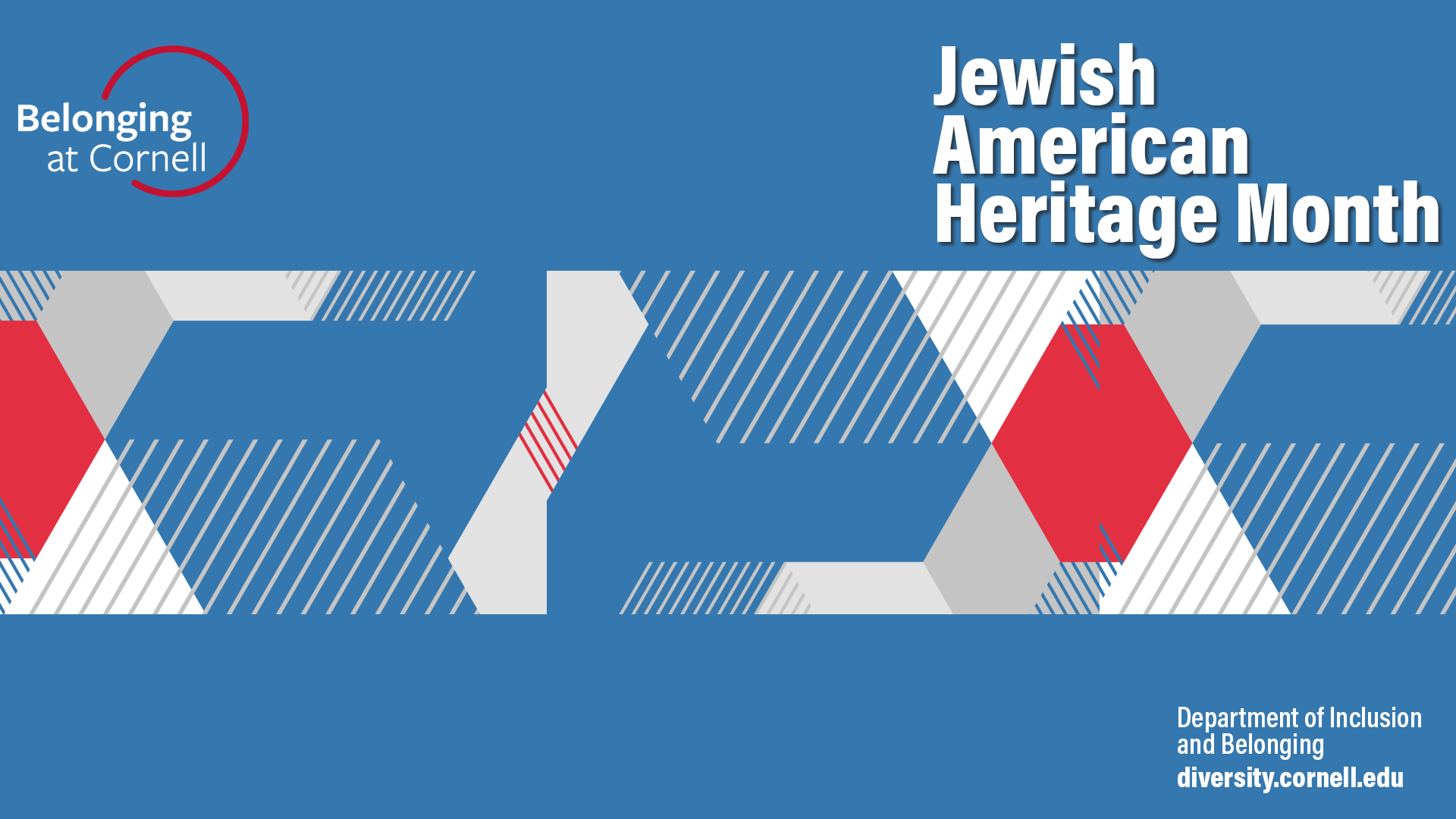
History
Jewish American Heritage Month is an annual recognition and celebration of Jewish American achievements in the United States. In 2006, George W. Bush formally declared May as Jewish Heritage Month. This month was chosen due to the commemoration of the 350th anniversary of the Jewish arrival to the United States, marked in May 2004.
This declaration was the crowning achievement in an effort by the Jewish Museum of Florida and South Florida Jewish community leaders that resulted in resolutions passed unanimously, first in the House of Representatives in December 2005 and later in the Senate in February 2006.
Jewish American Heritage Month pays tribute to the generations of Jewish Americans who helped form the fabric of American history, society, and culture. From contributing groundbreaking scientific discoveries to sharing stories of triumph and bravery, the month of May is designated to celebrate the achievements of those who have become integral to the nation's history. Prominent figures such as Albert Einstein and Ruth Bader Ginsburg represent just a fraction of the accomplishments made by Jewish Americans as the United States continues to honor their countless contributions and timeless traditions.
Source: [www.jewishheritagemonth.gov]
Resources
- The American Jewish Archives
- The American Jewish Historical Society
- The Center for Jewish History
- The National Museum of American Jewish History
Zoom Background*
Right click on the image above to save and add it as a background for your Zoom meetings! Need help? Click here to learn how to add this image as your Zoom background.
* If your image appears backwards, be sure to uncheck "Mirror my video" at the bottom of your Backgrounds & Filters window within Settings.

History
Pride Month commemorates years of struggle for civil rights and the ongoing pursuit of equal justice under the law for the lesbian, gay, bisexual, transgender, and queer community, as well as the accomplishments of LGBTQ individuals. But why is Pride Month celebrated in June?
The organized pursuit of gay rights in the United States reaches back to at least 1924 and the founding of the Society of Human Rights in Chicago by Henry Gerber. But the event that catalyzed the gay rights movement came in June 1969 in New York City’s Greenwich Village, at the Stonewall Inn. In the early morning hours of June 28, police raided this popular gathering place for young gay men, lesbians, bisexuals, and transgender people—arresting the employees for selling liquor without a license, roughing up many of the patrons, and clearing the bar. Outside, the crowd that watched the bar’s patrons being herded into police vans became enraged. Whereas previous witnesses to police harassment of members of the LGBTQ community had stood by passively, this time the crowd jeered the police and threw coins and debris at them, forcing the police to barricade themselves in the bar to await backup. Meanwhile, some 400 people rioted. Although police reinforcements dispersed the crowd, riots waned and waxed outside the bar for the next five days, and these Stonewall riots (also called the Stonewall uprising) provided the spark that ignited the gay rights movement in the United States.
[Source: Britannica.com]
Cornell Resources
- Cornell's LGBT Resource Center
- Cornell's Inclusive Excellence Podcast, Beyond Binaries special series
- LGBTQ+ Colleague Network Group (CNG) for LGBTQ+ staff and faculty
- Resources for LGBTQ Staff and Faculty
- Trans Inclusion at Cornell for Cornell staff
- Trans Inclusion Recommended Practices for students, faculty, and staff
- Gender Inclusive Pronouns for students, faculty, and staff
- Cornell Transgender Guide to Transitioning & Gender Affirmation: Provides guidance for staff on updating personal information in university systems, on and off campus resources, as well as suggested steps for working with your supervisor and colleagues.
Resources
- Pride Month 2024: Origins, Parades & Dates | HISTORY
- LGBTQ Travel in New York State by I Love NY
- A Guide To Gender Identity Terms by NPR
- 30 Different Pride Flags and What Each Represents by Marie Claire
- LGBTQ Pride Month Resources by the Library of Congress
- Talking to Young Children about Pride Month (with lots of additional resources) by Children's Library Lady
- 9 Ways to Celebrate Pride Month With Your Kids by Mom.com
- LGBTQ Pride Month Guide for Educators by GLSEN
Zoom Background*
Right click on the image above to save and add it as a background for your Zoom meetings! Need help? Click here to learn how to add this image as your Zoom background.
* If your image appears backwards, be sure to uncheck "Mirror my video" at the bottom of your Backgrounds & Filters window within Settings.
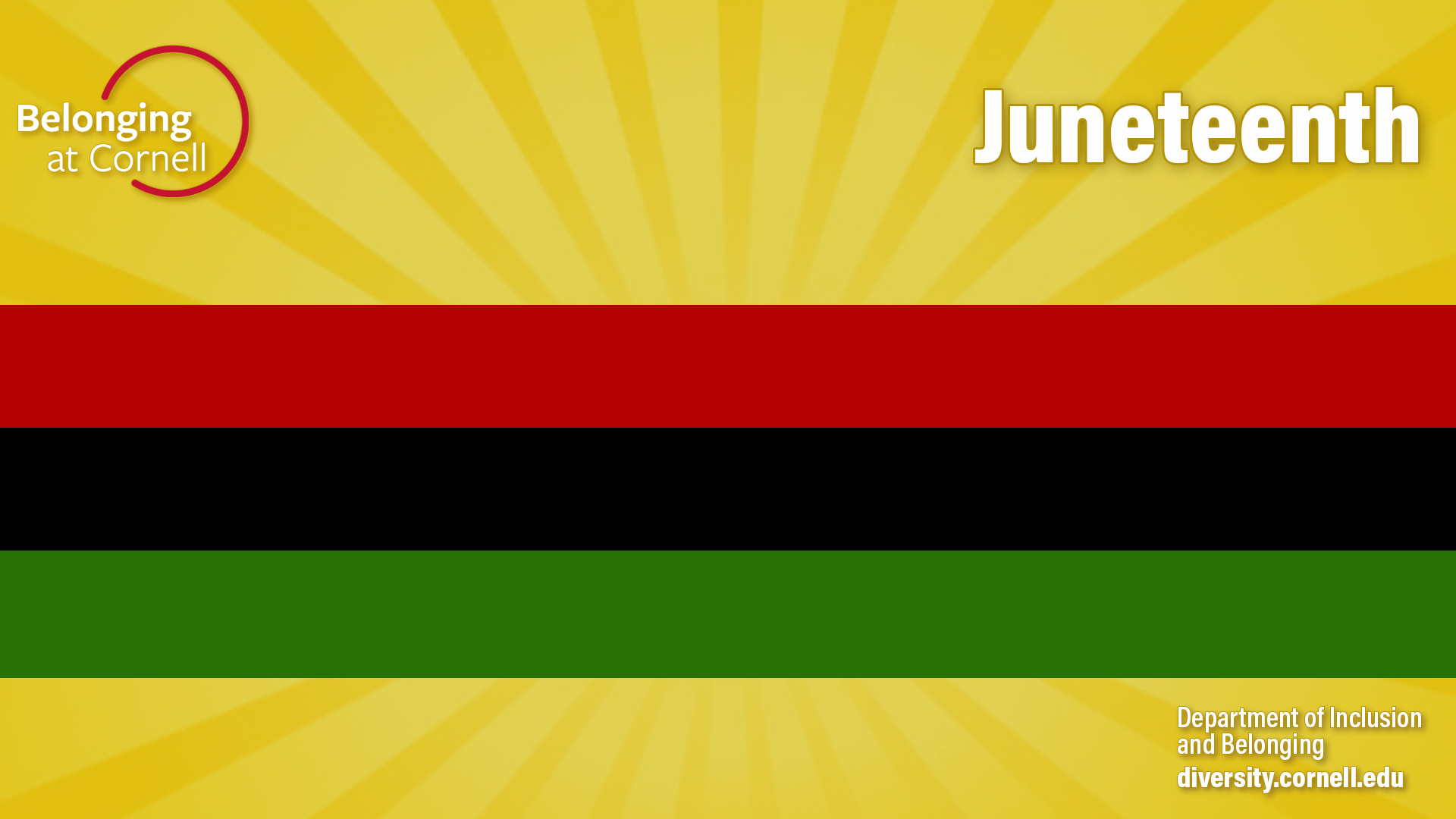
History
Juneteenth is the oldest nationally celebrated commemoration of the ending of slavery in the United States. Dating back to 1865, it was on June 19th that the Union soldiers, led by Major General Gordon Granger, landed at Galveston, Texas with news that the war had ended and that the enslaved were now free. Note that this was two and a half years after President Lincoln’s Emancipation Proclamation - which had become official January 1, 1863. The Emancipation Proclamation had little impact on the Texans due to the minimal number of Union troops to enforce the new Executive Order. However, with the surrender of General Lee in April of 1865, and the arrival of General Granger’s regiment, the forces were finally strong enough to influence and overcome the resistance.
[Source: Juneteenth.com]
Resources
- The Historical Legacy of Juneteenth by the Smithsonian National Museum of African American History & Culture
- The History and Meaning of Juneteenth by The Daily podcast from The New York Times
- Why all Americans should honor Juneteenth by Vox [YouTube Video]
- Honoring Juneteenth at Work from SHRM
- How to Celebrate Juneteenth by PureWow
Zoom Background*
Right click on the image above to save and add it as a background for your Zoom meetings! Need help? Click here to learn how to add this image as your Zoom background.
* If your image appears backwards, be sure to uncheck "Mirror my video" at the bottom of your Backgrounds & Filters window within Settings.

History
Caribbean immigrants have been contributing to the well-being of American society since its founding. Alexander Hamilton, the First Secretary of the Treasury was from the Caribbean island of Nevis. We count among our famous sons and daughters, Secretary of State Colin Powell, Cicely Tyson, W.E.B Dubois, James Weldon Johnson, Harry Belafonte and Sidney Poitier to name a few. [The Institute for Caribbean Studies, also known as ICS',] effort began in 1999 with a petition to President Bill Clinton for the recognition of a Caribbean American Heritage Month.
In 2000, ICS began leading activities in celebration of June as Caribbean American Heritage Month in Washington DC, building on efforts started by a now defunct ad-hoc group of Washington DC residents to have a Caribbean Heritage Month designated in Washington DC in 1999.
The official campaign for a National Caribbean American Heritage Month began in 2004 when a legislative bill was tabled in Congress by Congresswoman Barbara Lee. Language was provided by ICS Founder and President Dr. Claire Nelson. The Bill was reintroduced and passed the House in June 2005 and the Senate in February 2006. A Proclamation making the resolution official was signed by President George W. Bush on June 5, 2006.
[Source: Institute of Caribbean Studies]
Resources
- The Founder of Caribbean American Heritage Month [YouTube Video]
- Caribbean American Heritage Month by the U.S. Patent and Trademark Office (USPTO) [YouTube Video]
- Caribbean American Heritage Month infographic by the U.S. Department of the Interior
Zoom Background*
Right click on the image above or below to save and add it as a background for your Zoom meetings! Need help? Click here to learn how to add this image as your Zoom background.
The image below includes the following individuals starting from left to right, top row: Jean-Michel Basquiat, Sonia Sotomayor, Jada Pinkett Smith, Rita Moreno, Ricky Martin, Kwame Ture, Jennifer Lopez, Vice President Kamala Harris, Lin-Manuel Miranda.
Left to right, bottom row: Rihanna, Marc Anthony, Audre Lorde, Shirly Chisholm, James Weldon Johnson, Marcus Garvey, Celia Cruz, Cicely Tyson, Harry Belafonte.
* If your image appears backwards, be sure to uncheck "Mirror my video" at the bottom of your Backgrounds & Filters window within Settings.
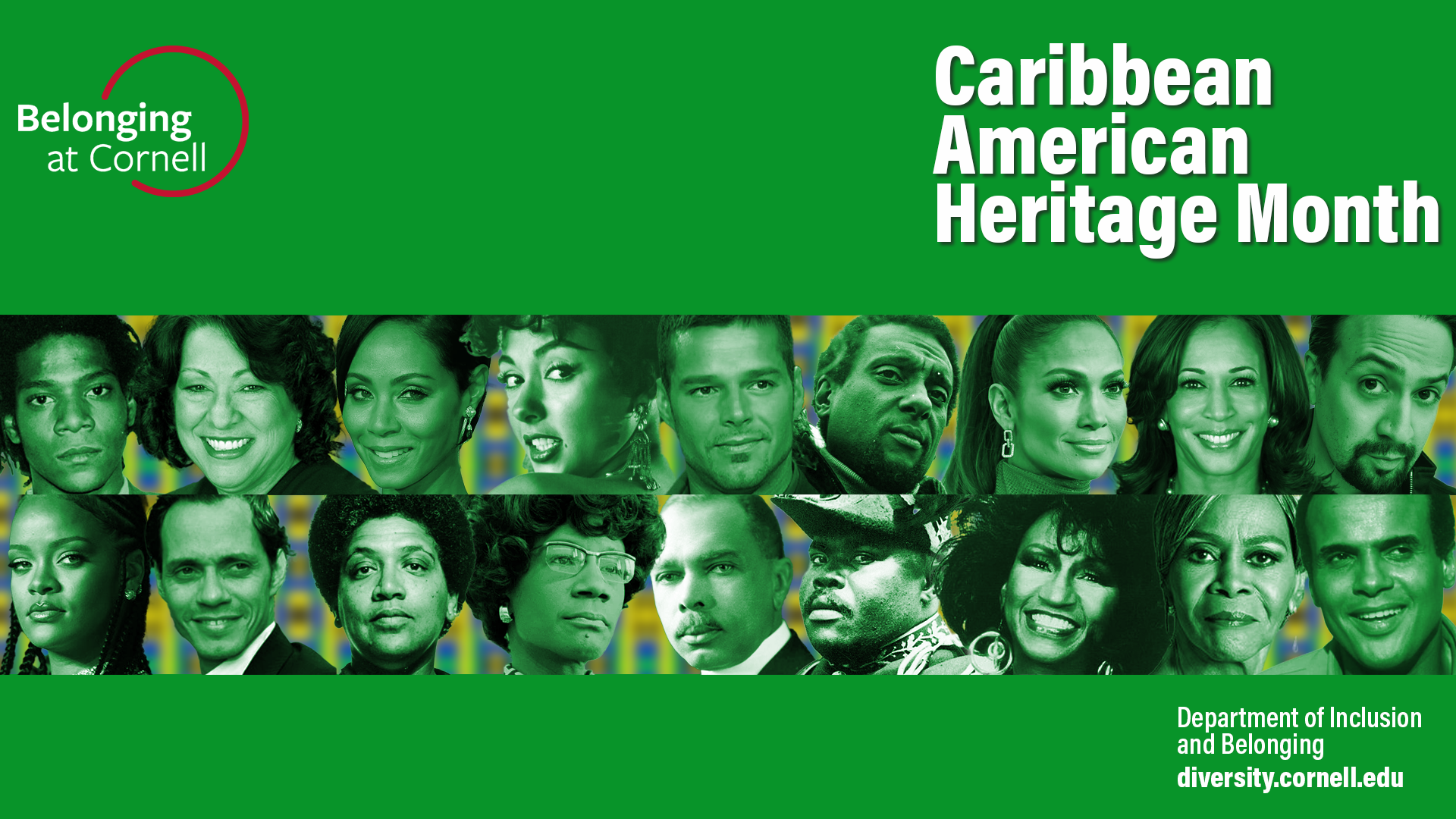

History
National Disability Independence Day commemorates the signing of the Americans with Disabilities Act (ADA). The ADA was signed into law on July 26, 1990, opening the door and breaking down barriers individuals with disabilities faced every day. This year the ADA celebrates its 31st anniversary.
The ADA is a civil rights law, prohibiting discrimination against individuals with disabilities in all areas of public life, including jobs, schools, transportation and all public and private places that are open to the public. It provides individuals with disabilities with protections similar to those provided to individuals on the basis of race, color, sex, national origin, age, and religion.
The day not only celebrates the anniversary of the ADA — it also serves several other purposes. First, the law broke down barriers individuals with disabilities faced every day. It also marked several changes that soon developed. Over time, common barriers such as narrow doors and small bathroom stalls became accessible to wheelchairs. Other examples include braille signs and crosswalks for the vision impaired. These changes improved mobility and safety.
[Source: Central City Concern]
Resources
- Listen to an episode or two of the Inclusive Excellence Podcast on this topic
- Learn more about the ADA on their official website
- ADA Anniversary featuring training videos and resources to celebrate this year's event
-
8 ways in which the Americans with Disabilities Act changed everyone's lives by the National Museum of American History
-
Americans with Disabilities Act Spotlight at the Smithsonian Museum
-
‘Nothing About Us Without Us’: 16 Moments in the Fight for Disability Rights by the New York Times
-
"After #OscarsSoWhite, Disability Waits for Its Moment" by The New York Times
- "'Disabled': Just #SayTheWord" by NPR
- List of 60 Books about Disability and Differences for kids features people of all differing physical abilities and neurodiverse children
-
25 Disability Awareness Activities For Kids Of All Ages by A Day In Our Shoes
Zoom Background*
Right click on the image above to save and add it as a background for your Zoom meetings! Need help? Click here to learn how to add this image as your Zoom background.
* If your image appears backwards, be sure to uncheck "Mirror my video" at the bottom of your Backgrounds & Filters window within Settings.
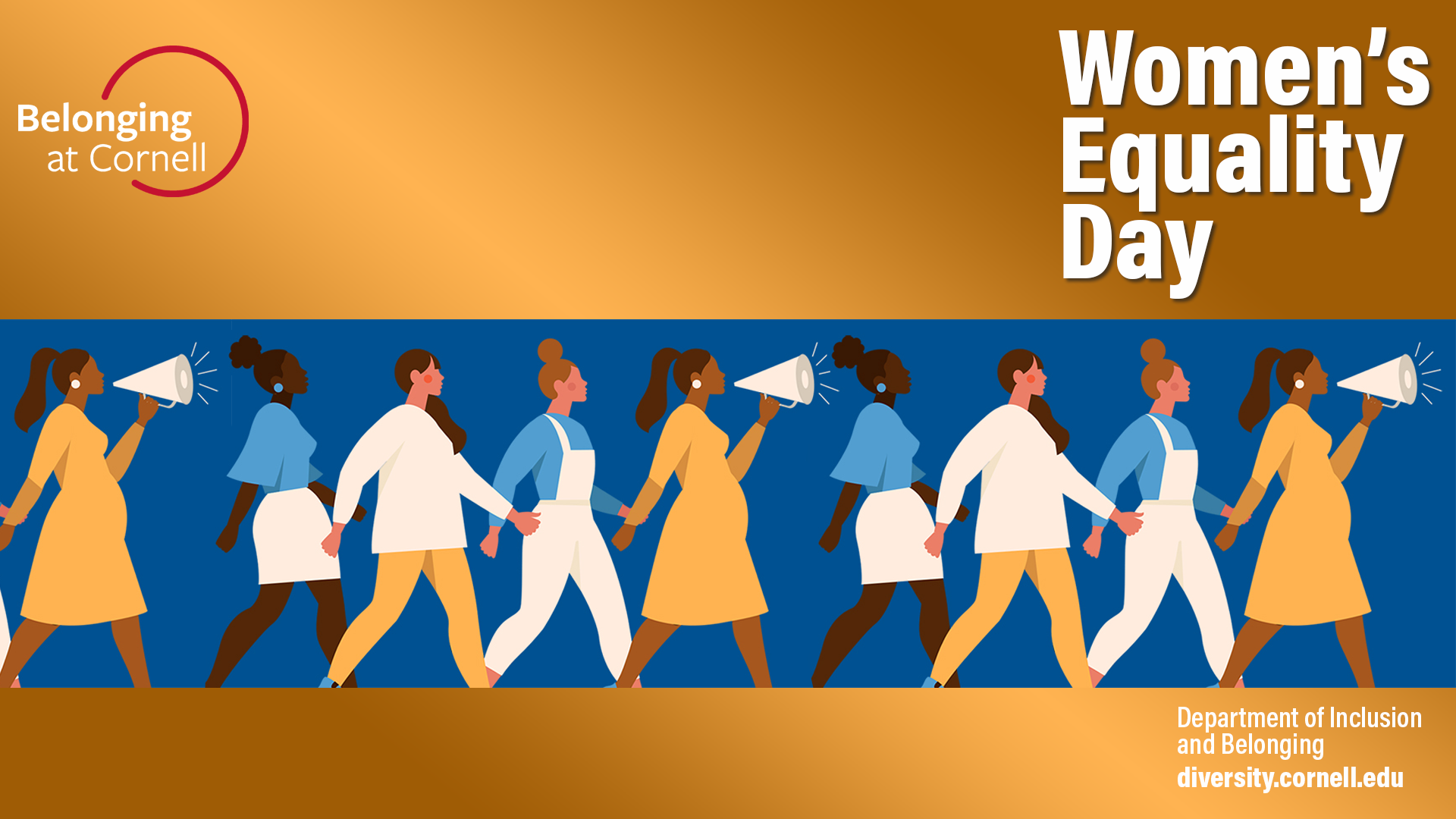
History
At the behest of Rep. Bella Abzug (D-NY), in 1971 and passed in 1973, the U.S. Congress designated August 26 as “Women’s Equality Day.” The date was selected to commemorate the 1920 certification of the 19th Amendment to the Constitution, granting women the right to vote. This was the culmination of a massive, peaceful civil rights movement by women that had its formal beginnings in 1848 at the world’s first women’s rights convention, in Seneca Falls, New York. The observance of Women’s Equality Day not only commemorates the passage of the 19th Amendment, but also calls attention to women’s continuing efforts toward full equality. Workplaces, libraries, organizations, and public facilities now participate with Women’s Equality Day programs, displays, video showings, or other activities.
[Source: National Women's History Alliance]
Resources
- History of Women's Equality Day from the National Women's History Museum
-
Why is August 26 known as Women’s Equality Day? from the National Constitution Center
-
Women's Equality Day Resources from the National Women's History Alliance
-
Women’s Equality Day Facts & Worksheets from kidskonnect
Zoom Background*
Right click on the image above to save and add it as a background for your Zoom meetings! Need help? Click here to learn how to add this image as your Zoom background.
* If your image appears backwards, be sure to uncheck "Mirror my video" at the bottom of your Backgrounds & Filters window within Settings.
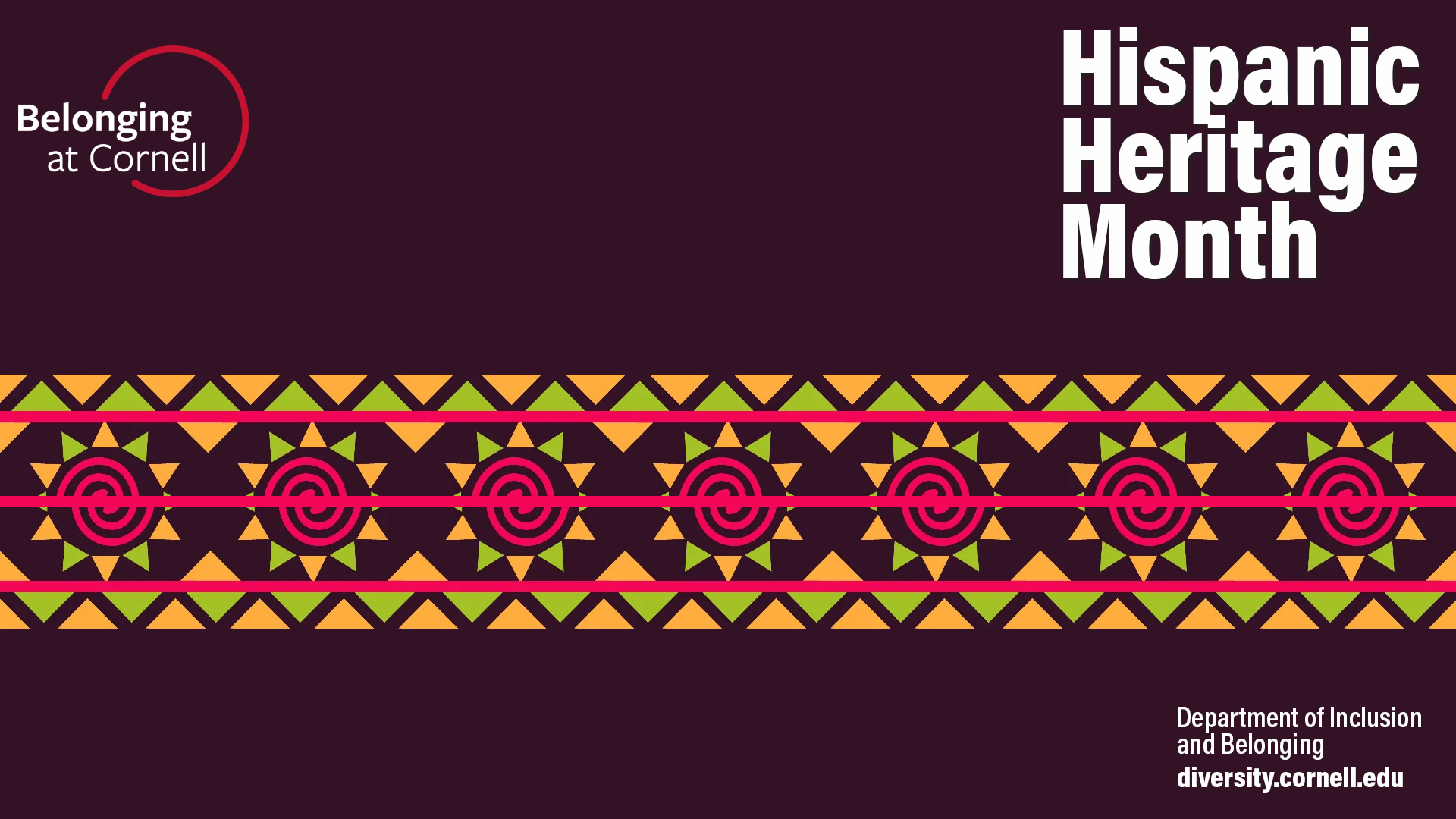
History
Each year, Americans observe National Hispanic Heritage Month from September 15 to October 15, by celebrating the histories, cultures and contributions of American citizens whose ancestors came from Spain, Mexico, the Caribbean and Central and South America.
The observation started in 1968 as Hispanic Heritage Week under President Lyndon Johnson and was expanded by President Ronald Reagan in 1988 to cover a 30-day period starting on September 15 and ending on October 15. It was enacted into law on August 17, 1988, on the approval of Public Law 100-402.
The day of September 15 is significant because it is the anniversary of independence for Latin American countries Costa Rica, El Salvador, Guatemala, Honduras and Nicaragua. In addition, Mexico and Chile celebrate their independence days on September 16 and September18, respectively. Also, Columbus Day or Día de la Raza, which is October 12, falls within this 30 day period.
[Source: www.hispanicheritagemonth.gov]
Resources
- Inclusive Excellence Podcast, Episode 54: Celebrating Hispanic Heritage Month & A Special Announcement
- Latino Living Center, a residential program house, provides students from many cultural backgrounds a safe and supportive environment where Latina/o cultures and worldviews are valued.
- Latino Living Center's Café con Leche series for students
- The National Hispanic Heritage Month website
- What's the difference between Hispanic and Latino? by Britannica
- 'Hispanic,' 'Latino,' Or 'Latinx'? Survey Says ... by NPR
- This Comic Breaks Down Latinx vs. Latine for Those Who Want to Be Gender-Inclusive by Remezcla
Zoom Background*
Right click on the image above or below to save and add it as a background for your Zoom meetings! Need help? Click here to learn how to add this image as your Zoom background.
The image below includes the following individuals starting from left to right, top row: Alexandria Ocasio Cortez, Sylvia Rivera, Dolores Huerta, Julia Alvarez, Ellen Ochoa, Julián Castro, Gloria Estefan, Emilio Estefan, Juan Felipe Herrera
Left to right, bottom row: Selena Quintanilla, Jaime Escalante, Marcario Garcia, Raúl Juliá, Sandra Cisneros, Pablo Alvarado, Jorge Ramos, Sylvia Mendez, Raffi Freedman-Gurspan
* If your image appears backwards, be sure to uncheck "Mirror my video" at the bottom of your Backgrounds & Filters window within Settings.


History
In October, Americans observe National Disability Employment Awareness Month by paying tribute to the accomplishments of the men and women with disabilities whose work helps keep the nation’s economy strong and by reaffirming their commitment to ensure equal opportunity for all citizens.
This effort to educate the public about the issues related to disability and employment began in 1945, when Congress enacted Public Law 176, declaring the first week of October each year as National Employ the Physically Handicapped Week. In 1962, the word “physically” was removed to acknowledge the employment needs and contributions of individuals with all types of disabilities. Some 25 years later, Congress expanded the week to a month and changed the name to National Disability Employment Awareness Month.
[Source: Library of Congress]
Resources
- Episode 36: "A Disabled Person is not Disabled..." on Ableism, Disability, and Intersectionality from Cornell University's Inclusive Excellence Podcast
- Disability Inclusion Glossary by Understood
- National Disability Employment Awareness Month 2021 by the Office of Disability Employment Policy
- EARN- Advancing Workforce Diversity
- What can YOU do? The Campaign for Disability Employment
- National Disability Employment Awareness Month from the American Bar Association
-
Creating A More Accessible And Inclusive Workplace For People With Disabilities by Forbes
-
How to Improve Your Organization’s Disability Inclusion Efforts by ELI, Inc.
-
Hiring People with Disability from the U.S. Department of Labor
-
Year-Round Employer Strategies for Advancing Disability Inclusion from the Office of Disability Employment Policy
Zoom Background*
Right click on the image above to save and add it as a background for your Zoom meetings! Need help? Click here to learn how to add this image as your Zoom background.
* If your image appears backwards, be sure to uncheck "Mirror my video" at the bottom of your Backgrounds & Filters window within Settings.
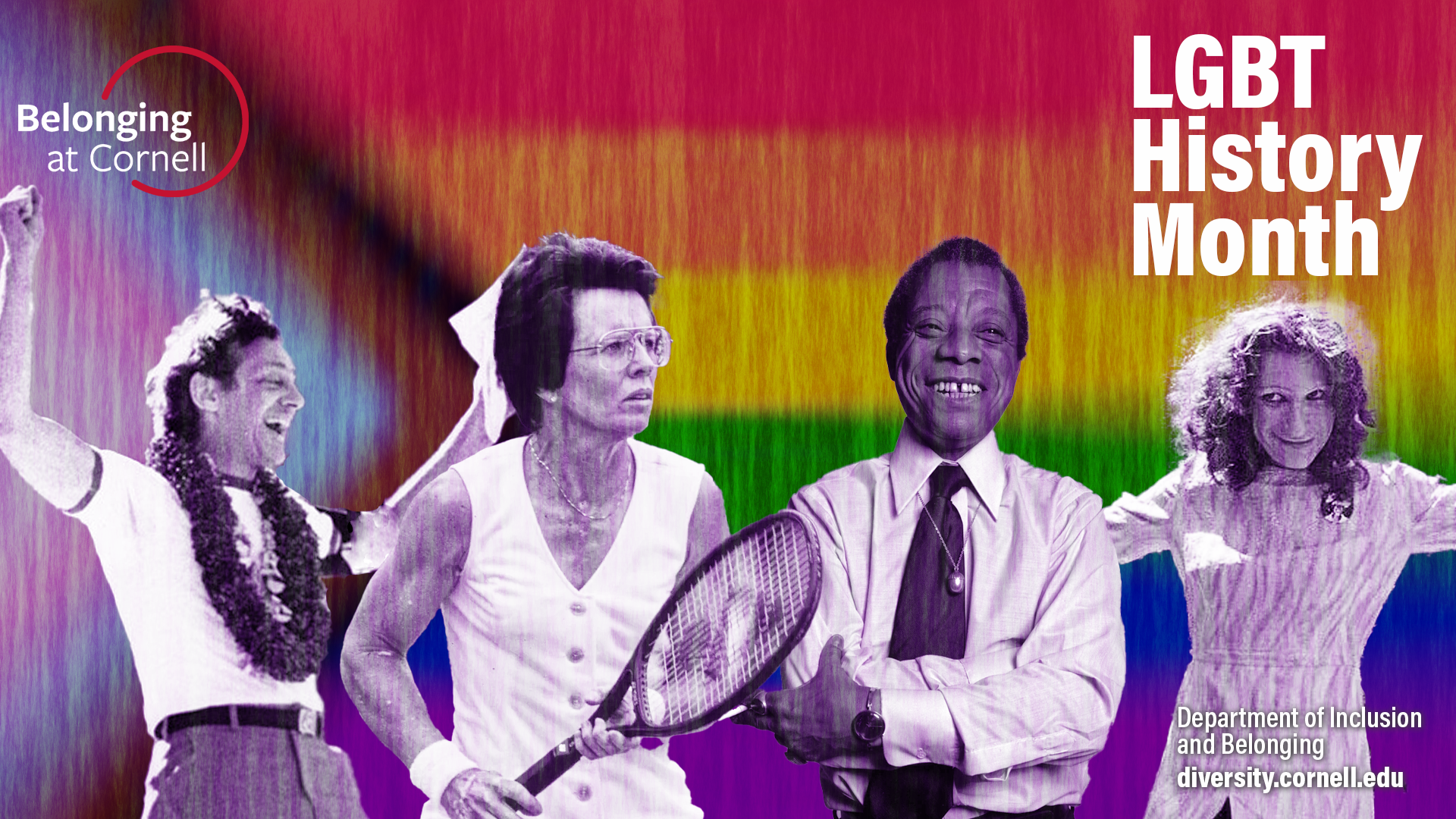
History
LGBT History Month celebrates the achievements of 31 lesbian, gay, bisexual or transgender Icons. Each day in October, a new LGBT Icon is featured with a video, bio, bibliography, downloadable images and other resources.
In 1994, Rodney Wilson, a Missouri high school teacher, believed a month should be dedicated to the celebration and teaching of gay and lesbian history, and gathered other teachers and community leaders. They selected October because public schools are in session and existing traditions, such as Coming Out Day (October 11), occur that month.
Gay and Lesbian History Month was endorsed by GLAAD, the Human Rights Campaign, the National Gay and Lesbian Task Force, the National Education Association and other national organizations. In 2006 Equality Forum assumed responsibility for providing content, promotion and resources for LGBT History Month.
[Source: LGBTHistoryMonth.com]
Resources
- LGBT History Month Resources from Carnegie Mellon Libraries
Zoom Background*
Right click on the image above to save and add it as a background for your Zoom meetings! Need help? Click here to learn how to add this image as your Zoom background.
Historical figures include (from left to right): Harvey Milk, Billie Jean King, James Baldwin, and Sylvia Rivera
* If your image appears backwards, be sure to uncheck "Mirror my video" at the bottom of your Backgrounds & Filters window within Settings.
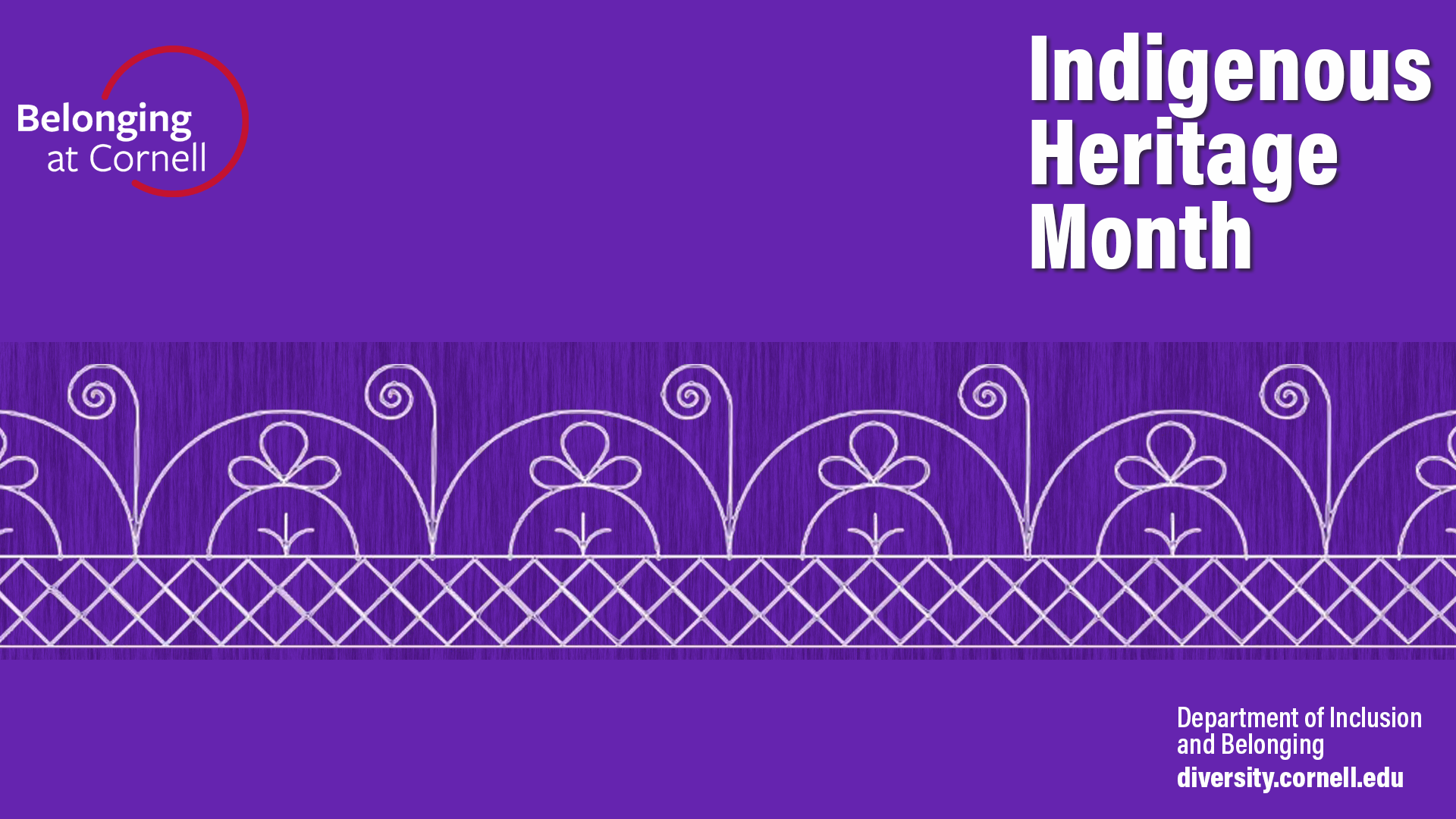
Image of a series of Haudenosaunee Sky Domes, which is a visual representation of Haudenosaunee cosmological map and an ecologically embedded relationship to this place. For more details: https://oneida-nsn.gov/our-ways/our-story/on%CA%8Cyote%CB%80a%C2%B7ka%C2%B7-symbolism/ and https://www.haudenosauneeconfederacy.com/symbols/
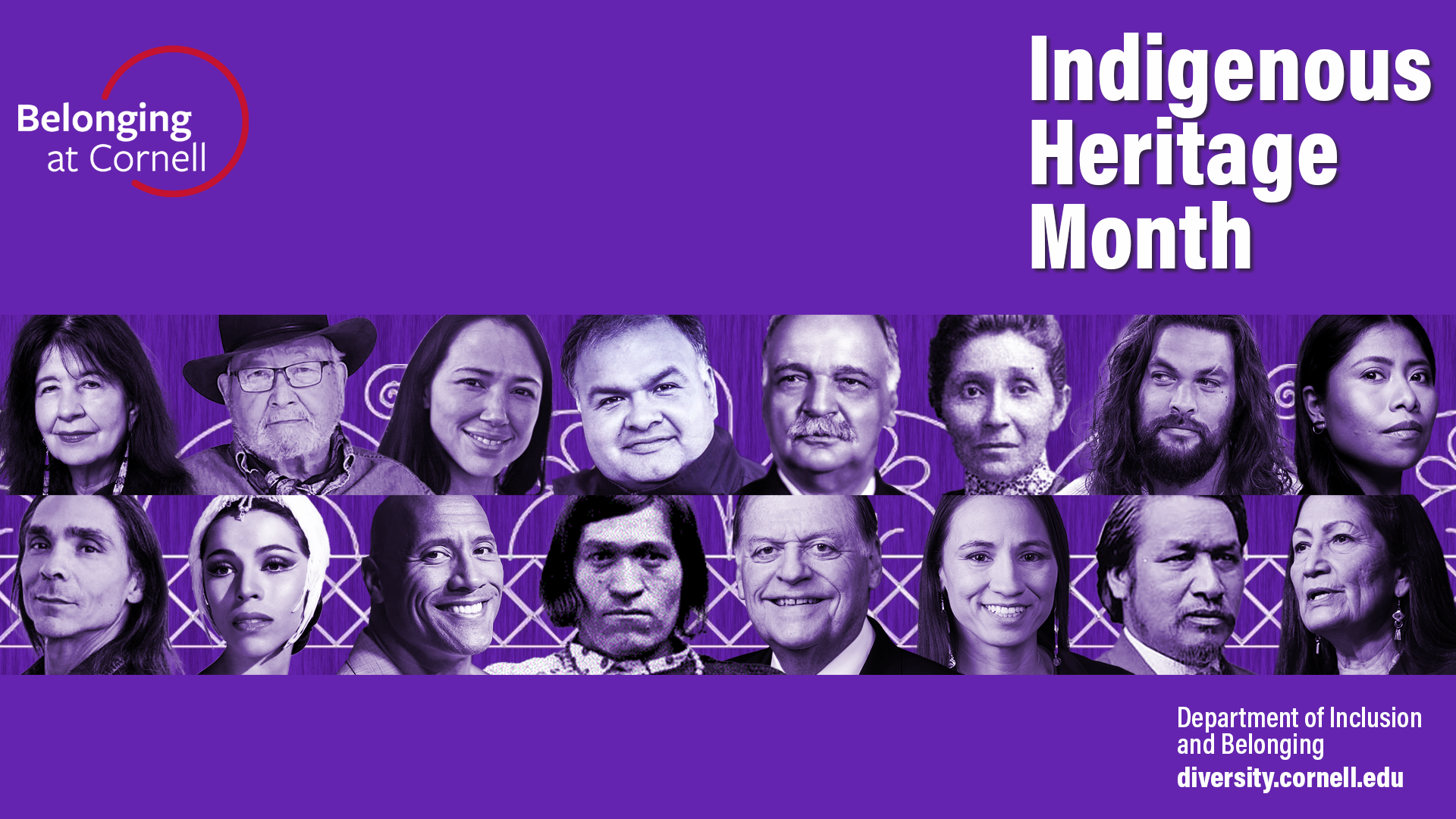
Top row, left to right:
Joy Harjo, poet, Muscogee; Navarre Scott Momaday, novelist, Kiowa; Irene Bedard, actress, Inupiat/Cree (Metis); Gary Farmer, actor & musician, Cayuga; Charles Curtis, U.S. Vice President, Kaw; Susan La Flesche Picotte, physician, Omaha; Jason Mamoa, actor, Hawiian; Yalitza Aparicio, actress, Mixtec/Trique
Bottom row, left to right:
Zahn Tokiya-ku McClarnon, actor, Lakota; Maria Tallchief (Ki He Kah Stah Tsa), dancer, Osage; Dwayne Johnson, actor & wrestler, Samoan; We’wha, artist, Zuni; Tom Cole, U.S. Representative, Chickasaw; Sharice Davids, U.S. Representative, Ho-Chunk (Winnebago); Ely Parker (Donehogawa), U.S. Army officer, engineer, diplomat, Tonawanda Seneca; Deb Haaland, U.S. Secretary of the Interior, Pueblo of Laguna
History:
What started at the turn of the twentieth century as an effort to gain a single day of recognition for the significant contributions Indigenous people have made to the United States eventually resulted in a week, and then in a whole month, being designated for that purpose.
Dr. Arthur C. Parker (Seneca on his father’s side), director of the Museum of Arts and Science in Rochester, New York, was one of the first proponents of what was then termed an “American Indian Day.” He persuaded the Boy Scouts of America to set aside a day honoring Indigenous people and they did so for three years. During the 1915 annual meeting of the Society for American Indians (SAI) in Lawrence, Kansas, the organization formally approved a plan for American Indian Day and directed its president, Reverend Sherman Coolidge (Arapahoe) to call upon the United States to observe it. Coolidge issued a proclamation on September 28, 1915, which called for the recognition of the second Saturday in May as American Indian Day.
In a related effort, SAI member Red Fox James (Blackfoot) rode horseback from state to state seeking approval for a day to honor Indigenous people. On December 14, 1915, he presented the endorsements of twenty-four state governments to President Woodrow Wilson at the White House. There is no record, however, that a national day was proclaimed at this time.
New York was the first to name a state American Indian Day in 1916, when it was declared to be the second Saturday in May. Several states continue to celebrate Native American Days at various times during the year. In Illinois, for example, legislators enacted such a day in 1919. Presently, several states and localities have designated Columbus Day as Indigenous Peoples’ Day, but this is not recognized as a national holiday.
In 1976, Jerry C. Elliott-High Eagle (Cherokee/Osage) developed legislation proposing a week for celebration of Indigenous cultures and histories. President Gerald Ford designated the week of October 10-16, 1976, as Native American Awareness Week. Subsequent presidents renewed the week-long commitment.
In 1990 President George H. W. Bush approved a joint resolution designating November 1990 “National American Indian Heritage Month.” Similar proclamations, under variants on the name (including “National American Indian and Alaska Native Heritage Month” and “Native American Heritage Month”) have been issued by the president each year since 1994.
[adapted from: https://nativeamericanheritagemonth.gov/]
Resources:
https://www.haudenosauneeconfederacy.com/
American Indian and Indigenous Studies Speaker Series
Cornell University & Indigenous Dispossession Project
More than a Word https://www.kanopy.com/product/more-word
Native American and Indigenous Studies Association https://naisa.org/about/naisa-council/
https://www.firstnations.org/news/4-reasons-to-rethink-your-november/
Zoom Background*
Right click on the images above to save and add it as a background for your Zoom meetings! Need help? Click here to learn how to add this image as your Zoom background.
* If your image appears backwards, be sure to uncheck "Mirror my video" at the bottom of your Backgrounds & Filters window within Settings.

History
Veterans Day originated as “Armistice Day” on Nov. 11, 1919, the first anniversary of the end of World War I. Congress passed a resolution in 1926 for an annual observance, and Nov. 11 became a national holiday beginning in 1938. Unlike Memorial Day, Veterans Day pays tribute to all American veterans—living or dead—but especially gives thanks to living veterans who served their country honorably during war or peacetime.
- Veterans Day occurs on November 11 every year in the United States in honor of the “eleventh hour of the eleventh day of the eleventh month" of 1918 that signaled the end of World War I, known as Armistice Day.
- In 1954, President Dwight D. Eisenhower officially changed the name of the holiday from Armistice Day to Veterans Day.
- In 1968, the Uniform Holidays Bill was passed by Congress, which moved the celebration of Veterans Day to the fourth Monday in October. The law went into effect in 1971, but in 1975 President Gerald Ford returned Veterans Day to November 11, due to the important historical significance of the date.
-
Veterans Day commemorates veterans of all wars.
- Great Britain, France, Australia and Canada also commemorate the veterans of World War I and World War II on or near November 11th: Canada has Remembrance Day, while Britain has Remembrance Sunday (the second Sunday of November).
- In Europe, Great Britain and the Commonwealth countries it is common to observe two minutes of silence at 11 a.m. every November 11.
-
Every Veterans Day and Memorial Day, Arlington National Cemetery holds an annual memorial service. The cemetery is home to the graves of over 400,000 people, most of whom served in the military.
[Source: History.com]
Resources
- Episode 8: More of What's Going On? Veterans at Work from Cornell University's Inclusive Excellence Podcast
- Veterans Day from the Office of Public and Intergovernmental Affairs
- Activities for Veterans Day from the U.S. Department of Veterans Affairs
- 5 Ways to Celebrate Your Veterans on Veterans Day by Military.com
Zoom Background*
Right click on the image above to save and add it as a background for your Zoom meetings! Need help? Click here to learn how to add this image as your Zoom background.
* If your image appears backwards, be sure to uncheck "Mirror my video" at the bottom of your Backgrounds & Filters window within Settings.

History
Dr. Maulana Karenga, professor and chairman of Black Studies at California State University, Long Beach, created Kwanzaa in 1966. After the Watts riots in Los Angeles, Dr. Karenga searched for ways to bring African Americans together as a community. He founded US, a cultural organization, and started to research African “first fruit” (harvest) celebrations. Karenga combined aspects of several different harvest celebrations, such as those of the Ashanti and those of the Zulu, to form the basis of Kwanzaa.
The name Kwanzaa is derived from the phrase “matunda ya kwanza” which means “first fruits” in Swahili. Each family celebrates Kwanzaa in its own way, but celebrations often include songs and dances, African drums, storytelling, poetry reading, and a large traditional meal. On each of the seven nights, the family gathers and a child lights one of the candles on the Kinara (candleholder), then one of the seven principles is discussed. The principles, called the Nguzo Saba (seven principles in Swahili) are values of African culture which contribute to building and reinforcing community among African-Americans. Kwanzaa also has seven basic symbols which represent values and concepts reflective of African culture. An African feast, called a Karamu, is held on December 31.
The candle-lighting ceremony each evening provides the opportunity to gather and discuss the meaning of Kwanzaa. The first night, the black candle in the center is lit (and the principle of umoja/unity is discussed). One candle is lit each evening and the appropriate principle is discussed.
[Source: History.com]
The Seven Principles
The seven principles, or Nguzo Saba are a set of ideals created by Dr. Maulana Karenga. Each day of Kwanzaa emphasizes a different principle.
Unity:Umoja (oo–MO–jah)
To strive for and maintain unity in the family, community, nation, and race.
Self-determination: Kujichagulia (koo–gee–cha–goo–LEE–yah)
To define ourselves, name ourselves, create for ourselves, and speak for ourselves.
Collective Work and Responsibility: Ujima (oo–GEE–mah)
To build and maintain our community together and make our brother’s and sister’s problems our problems and to solve them together.
Cooperative Economics: Ujamaa (oo–JAH–mah)
To build and maintain our own stores, shops, and other businesses and to profit from them together.
Purpose: Nia (nee–YAH)
To make our collective vocation the building and developing of our community in order to restore our people to their traditional greatness.
Creativity: Kuumba (koo–OOM–bah)
To do always as much as we can, in the way we can, in order to leave our community more beautiful and beneficial than we inherited it.
Faith: Imani (ee–MAH–nee)
To believe with all our heart in our people, our parents, our teachers, our leaders, and the righteousness and victory of our struggle.
[Source: History.com]
The Seven Symbols
The seven principles, or Nguzo Saba are a set of ideals created by Dr. Maulana Karenga. Each day of Kwanzaa emphasizes a different principle.
Zoom Background*
Right click on the image above to save and add it as a background for your Zoom meetings! Need help? Click here to learn how to add this image as your Zoom background.
* If your image appears backwards, be sure to uncheck "Mirror my video" at the bottom of your Backgrounds & Filters window within Settings.